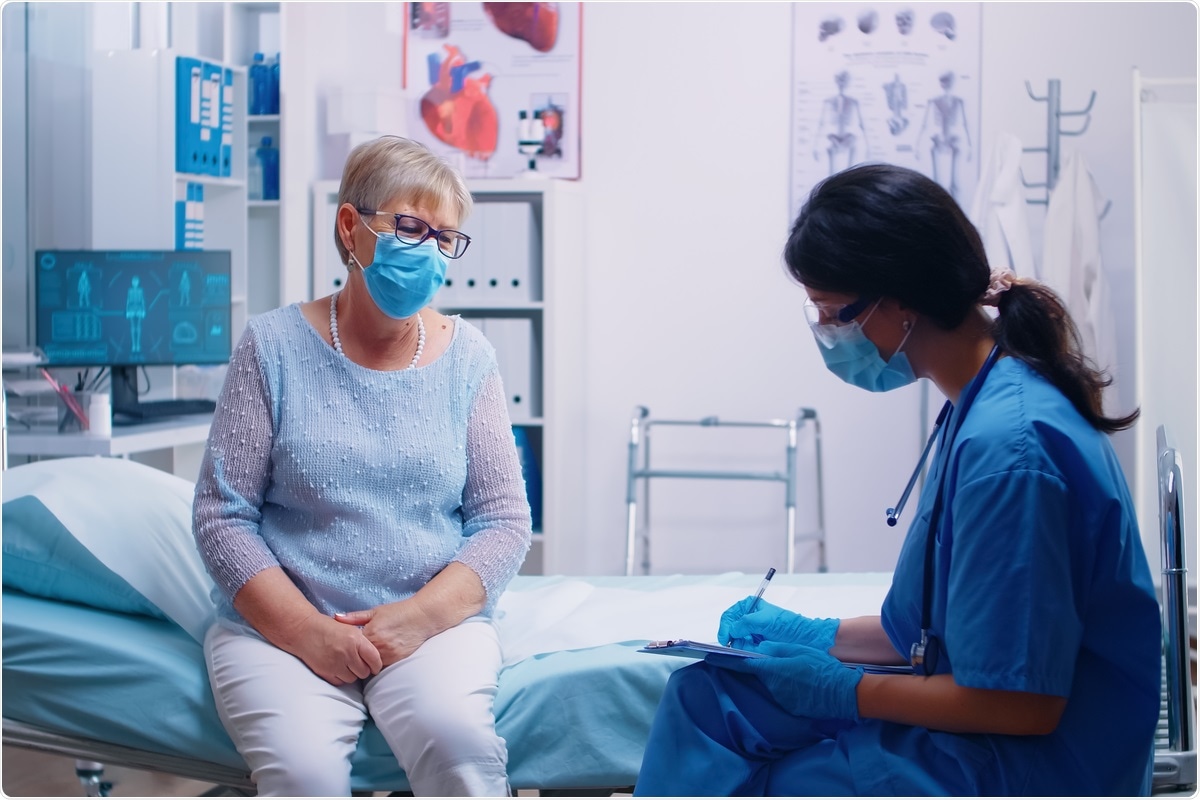Critical function of IL-7 in diagnosis, prognosis, and treatment of COVID-19 patients
Interleukin (IL) 7 is essential for the development and function of T-cells. IL-7 binds to the IL-7 receptor (IL-7R), which is a heterodimer structure comprised of two chains, the IL-7Ra (CD127) chain and the gamma (CD132) chain, with shared receptors for IL-2, IL-4, IL-9, IL-15, and IL-21.
 Study: IL-7 in SARS-CoV-2 Infection and as a Potential Vaccine Adjuvant. Image Credit: DC Studio/ Shutterstock
Study: IL-7 in SARS-CoV-2 Infection and as a Potential Vaccine Adjuvant. Image Credit: DC Studio/ Shutterstock
Memory CD4+ T-cell apoptosis is prevented by IL-7/IL7R signaling by an increase in the levels of anti-apoptotic proteins, such as Bcl-2, Mcl-1, and Bcl-xL via a JAK/STAT pathway. Previous reports have stated that IL-7 can prevent the erosion of telomeres on naïve CD8+ T-cells without losing the replication potential of the cells. Assisting in cell proliferation is also a key role of IL-7.
Coronavirus disease 2019 (COVID-19) individuals present with varying symptoms and clinical manifestations. Some patients display a cytokine storm, the hyperproduction of pro-inflammatory cytokines, which may contribute towards the development of acute respiratory distress syndrome (ARDS), which can be life-threatening.
A previous study conducted in Wuhan, China, showed that COVID-19 patients displayed elevated levels in a wide variety of pro-inflammatory cytokines compared to healthy individuals. In a review published in Fronteirs in Immunology, researchers from the National Institutes of Health, United States, summarized the therapeutic and pathogenic role of IL-7 in patients with COVID-19 and examined the promising role of IL-7 as a vaccine adjuvant.
Does IL-7 play a therapeutic role in patients with severe COVID-19?
In a case study, increased lymphocyte counts without evidence of lung damage and hyper-inflammation were observed in critically ill COVID-19 patients treated with IL-7. In other case studies, following treatment with IL-7, two COVID-19 patients significantly improved, one had severe lymphopenia, and the other had life-threatening complications associated with the virus.
In a clinical trial, a dose-dependent increase in CD4 count without an increase in immune activation was observed in HIV-1 infected individuals with chronic lymphopenia following recombinant human IL-7 (rhIL-7) therapy. A possible mechanism of how IL-7 works as a therapeutic agent may be restoring the restoration of the naïve T-cell pool through increased survival signals or more homeostatic proliferation.
Individuals administered rhIL-7 could induce polyclonal T-cells and maintain circulatory CD4 and CD8 T-cells without expansion of T-regulatory cells. At present, multicentre clinical trials seek participants to understand better the immunological and clinical benefits of IL-7 treatment in COVID-19 patients. Thus, the current studies and clinical trials can address the efficacy and safety of IL-7, its viral load reduction capabilities, and the survival rates of COVID-19 patients treated with IL-7.
Could IL-7 be used as an effective adjuvant for SARS-CoV-2 vaccinations?
Higher antibody titers with an expansion of germinal center (GC) B-cells and T-follicular helper (Tfh) cells were observed in animal models given IL-7-fused vaccines compared with the vaccine alone. IL-7-fused trivalent inactivated influenza virus vaccine (TIV) given to mice and monkeys induced higher antigen-specific antibodies and enhanced expansion of Tfh cells than vaccine alone.
A better vaccine response via the induction of ICOS, BCL-6, and PD1 in the Tfh, is produced from IL-7 fusion with vaccine antigen. In another study, mice that received adeno-associated virus-delivered IL-7 with a tuberculosis subunit vaccine showed increased antibodies and memory T-cells and higher levels of transcription factors, such as bach2.
Administration of recombinant glycosylated simian IL-7 in macaques induced strong antibody responses and triggered over-expression of cytokines and chemokines. This cytokine and chemokine over-expression may be due to indirect or direct effects of IL-7, and these chemokines attracted natural killer cells, macrophages, lymphocytes, and dendritic cells to the vaginal tissues. The studies discussed above show the role IL-7 can play as an adjuvant in mice and macaques, which suggests that IL-7 could be a potential adjuvant for adenovirus-based, subunit, inactivated, or virus-like particles in future severe acute respiratory syndrome coronavirus 2 (SARS-CoV-2) studies.
Implications
There have been clinical trials conducted showing the benefit of IL-7 without adverse side effects for various conditions, such as chronic viral infections, including HIV. The authors in this study that IL-7 has potential applications for COVID-19, such as a therapeutic agent, a vaccine adjuvant, and a biomarker.
It could be suggested that future studies should investigate the virological, clinical, and immunological outcomes of IL-7 used as a therapy for COVID-19 patients. Moreover, future clinical trials are required to confirm the use of IL-7 as a biomarker, analyze the therapeutic efficacy at varying stages of the disease, any safety issues, and further validate its use as a vaccine adjuvant.
- Bekele, Y., Sui, Y. and Berzofsky, J. (2021) "IL-7 in SARS-CoV-2 Infection and as a Potential Vaccine Adjuvant", Frontiers in Immunology, 12. doi: 10.3389/fimmu.2021.737406.
Posted in: Medical Science News | Medical Research News | Disease/Infection News
Tags: Acute Respiratory Distress Syndrome, Adenovirus, Antibodies, Antibody, Antigen, Apoptosis, Biomarker, CD4, Cell, Cell Proliferation, Chemokine, Chemokines, Chronic, Clinical Trial, Coronavirus, Coronavirus Disease COVID-19, Cytokine, Cytokines, Efficacy, HIV, HIV-1, Inflammation, Influenza, Interleukin, Lymphocyte, Lymphopenia, Natural Killer Cells, Proliferation, Receptor, Respiratory, SARS, SARS-CoV-2, Severe Acute Respiratory, Severe Acute Respiratory Syndrome, Syndrome, T-Cell, Transcription, Transcription Factors, Tuberculosis, Vaccine, Vaginal, Virus
.jpg)
Written by
Colin Lightfoot
Colin graduated from the University of Chester with a B.Sc. in Biomedical Science in 2020. Since completing his undergraduate degree, he worked for NHS England as an Associate Practitioner, responsible for testing inpatients for COVID-19 on admission.
Source: Read Full Article


